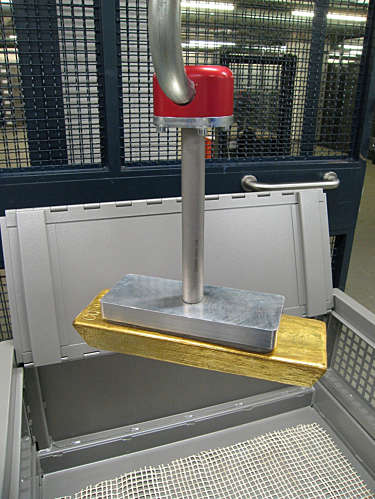Bundesbank Gold Vault

Bundesbank gold vault in Frankfurt.
Image credit: © Bundesbank/Nils Thies
The arrangement of the large gold bars in the Bundesbank’s vault is very different from that used in the Bank of England vault. In the case of the Bundesbank, it can safely be assumed that all the gold shown in this image belongs to the German state and that there will seldom be a need to move bars into or out of the stock.
The use of adhesive labels on the ends of the bars for identification clearly facilitates the process of auditing.
By contrast, in the Bank of England vault, only a relatively small proportion of the bars in the vault are held on behalf of the UK Treasury and most of the gold is held for other customers – mainly central banks (and to a lesser extent, members of the London bullion market).
Given the active nature of the London market, in other words based on the ability of the Bank’s customers to sell or lend their gold to the market, there are frequent movements of bars into and out of the vault. For this reason, the bars at the Bank of England are held on individual pallets that can be moved to or from the vaults using forklift trucks. Previously, every Good Delivery bar received by the Bank had a new number stamped on it, which the Bank used in its inventory control system. This has been replaced more recently by the use of a peelable label that serves the same purpose (and which can easily be removed when the bar is shipped to a commercial vault).
Detail
- Era
- Modern Period
- Related tags


